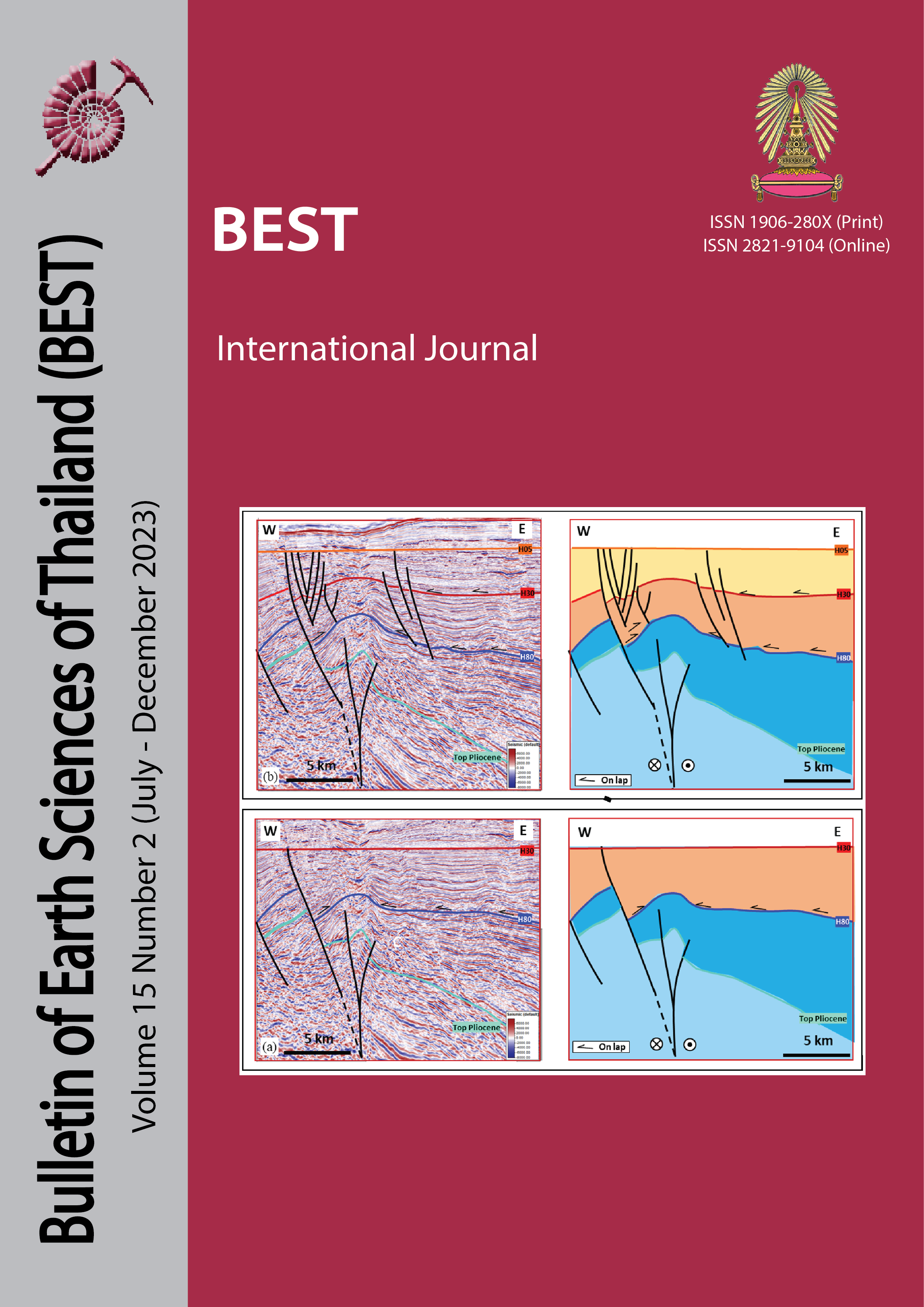Micro-CT Imaging for Shale Pore Networks from Huai Hin Lat Formation
Main Article Content
Abstract
Shale gas has emerged as a significant energy resource globally due to its abundance, cost-effectiveness, and environmental advantages. Understanding the geological and physical properties of shale formations, particularly porosity, is crucial for optimizing production and recovery rates. This study focuses on investigating the porosity characteristics of mudstone samples from the Sap Phlu Basin and the Na Po Song Basin in Thailand's Huai Hin Lat Formation, a potential shale gas prospect. Micro computed tomography (micro-CT), X-ray fluorescence (XRF), and X-ray diffractometer (XRD) techniques were employed to analyze the porosity and mineral composition of the samples. The results revealed distinct differences in porosity between the two basins, with porosity levels ranging from 0.05% to 0.07% in the Sap Phlu Basin and 0.12% to 0.17% in the Na Po Song Basin. The dominant mineral composition, primarily calcite, contributed to denser matrices and potentially lower porosity. However, the presence of quartz, albite, and dolomite influenced porosity variations within the samples. Fracture porosity, observed particularly in samples cut parallel to the bedding plane, highlighted its beneficial role in enhancing fluid flow within the mudstone formations, indicating its potential significance in shale gas extraction. These findings provide valuable insights into the porosity characteristics, mineral composition, and fracture porosity dynamics in mudstone reservoirs, essential for assessing shale gas reservoir potential and informing production strategies.
Article Details
How to Cite
lertsrisunthad, punnaya, & Chenrai, P. . (2023). Micro-CT Imaging for Shale Pore Networks from Huai Hin Lat Formation . Bulletin of Earth Sciences of Thailand, 15(2). retrieved from https://ph01.tci-thaijo.org/index.php/bestjournal/article/view/253089
Section
Research Articles

This work is licensed under a Creative Commons Attribution-NonCommercial-NoDerivatives 4.0 International License.
Copyright © 2008 Department of Geology, Faculty of Science, Chulalongkorn University. Parts of an article can be photocopied or reproduced without prior written permission from the author(s), but due acknowledgments should be stated or cited accordingly.


